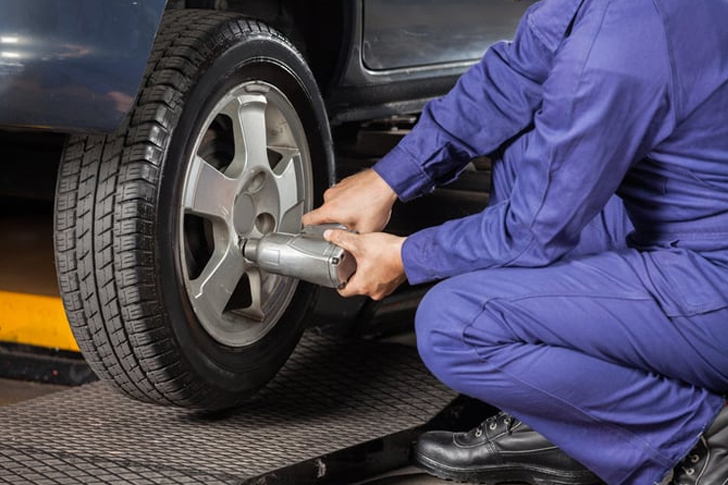**Guide to Affordable Tire Replacement Options**
Tire replacement: it’s an inevitable aspect of car maintenance that can significantly impact your safety and your wallet. However, navigating the options for affordable tire replacement need not be a daunting or prohibitively expensive task. This guide will provide a detailed look into how you can save money on replacing your tires, while still ensuring that you’re getting a product that is safe and suitable for your vehicle.

Understanding Tire Basics and When to Replace Them
The first step in saving money on tire replacement is knowing when you actually need new tires. Factors like tread wear, tire age, and damage type play into this decision. The U.S. Department of Transportation recommends replacing tires when they reach 2/32” of remaining tread depth. Meanwhile, even absent of wearing down, tires should typically be replaced every 6 years regardless of use, due to the degradation of the rubber compounds over time.
To check the tread depth, you can use a penny. Insert it into the tread groove with Lincoln’s head upside down; if you can see all of Lincoln’s head, it’s time to replace the tire. Paying attention to these indicators will keep you safe and help you avoid premature replacement, saving money over time.
Exploring Different Tire Types and What Fits Your Needs
There are various types of tires available in the market – all-season, performance, winter, off-road, and touring, among others. Each type comes with its own price range and has been designed to meet specific driving conditions and needs. For example, unless you’re driving in a region that experiences severe winters, you might not need to invest in winter tires.
Furthermore, while high-performance tires might offer better grip and handling, they can be more expensive and may wear out faster than all-season tires. Review your driving conditions, the climate where you live, and how you use your vehicle to choose the right type of tire. This ensures you’re not over-spending on features you don’t need.
Where to Shop: Dealerships, Big Box Stores, or Online Retailers?
Where you decide to buy your tires can also dramatically impact the cost. Dealerships typically charge more but offer original equipment tires specifically designed for your vehicle model. On the other hand, tire specialty chains, big box stores, and online retailers often have wider selections and lower prices.
Online tire retailers like Tire Rack and Discount Tire Direct offer competitive pricing and the convenience of shipping tires directly to your local installer. Meanwhile, big box retailers such as Costco and Walmart provide not only affordability but also the benefit of walk-in service. Many consumers find that the ability to handle returns and issues in-person at these stores adds a level of reassurance worth considering.
Making the Most of Sales and Promotions
Sales and promotions can be your best friend when looking to save money on tires. Black Friday, back-to-school seasons, and spring promotions are common periods when tires are put on sale. Signing up for newsletters from tire manufacturers and retailers can alert you to upcoming deals and exclusive coupons that can be further leveraged to reduce costs.
It’s also worth looking at package deals where you can get a discount on services like alignment and tire rotation when you purchase a set of tires. These services are essential for extending the life of your tires and will save money in the long run.
Considerations for Used and Retread Tires
While not for everyone, buying used or retread tires can be another method to cut expenses. Used tires can be a good deal if they have plenty of tread life left and no serious issues. However, they come with risk since their history is unknown. Ensure you purchase from a reputable seller who can provide a clear history of the tire.
Retread tires, which are old tires that have been refurbished with new tread, are commonly used in commercial vehicles like buses and large trucks but can also be an option for personal cars. They are cheaper than brand new tires but do make sure they meet safety standards and have been retreaded professionally.
DIY Maintenance to Extend Tire Life
Maintaining tire pressure at the recommended level, regular tire rotation, balancing, and proper alignment are crucial for extending the life of your tires, thereby delaying the need for replacement. Not only do these practices reduce wear, but they also improve gas mileage, thus saving money on both fuel and future tire purchases.
Conclusively, while tire replacement can be a significant expense, understanding when replacements are necessary, choosing the right type of tire, where to shop, and how to find the best deals can make it much more manageable. Regular maintenance and considering all available purchasing options, including used or retread tires, can add up to substantial savings over the lifetime of your vehicle.
Finding affordable tire replacement options doesn’t mean compromising on quality or safety. With a bit of research and strategic buying, you can find tires that support your vehicle’s performance and your financial health alike.







Recent Comments